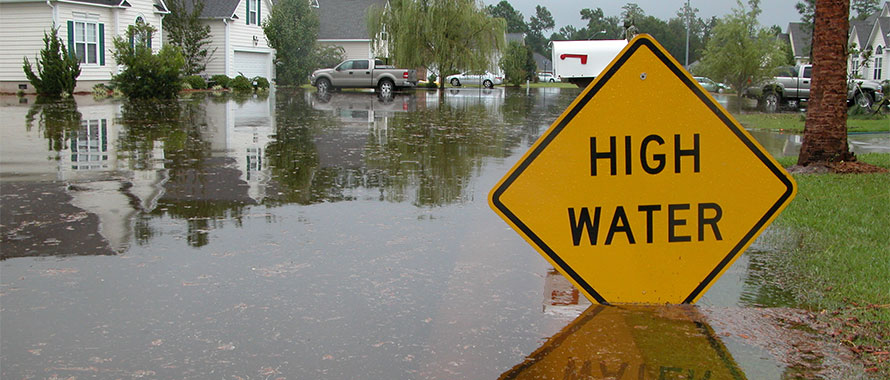Even before Hurricane Ian punctuated another active storm season in late 2022, Flood Insurance was amid a hard market. The hard market has been a result of several factors, including post-pandemic inflationary pressures, causing carriers to reduce their catastrophic exposure or exit the market altogether.
One of the areas most affected by inflation has been reconstruction valuation costs, causing London markets to push for a 5-7 percent minimum cost for reconstruction. Hard market conditions of Flood Insurance have also forced many clients to purchase Excess Flood policies to secure exposed layers necessary to provide complete coverage.
An update to the National Flood Insurance Program’s (NFIP) risk rating methodology (known as Risk Rating 2.0) has had a significant impact as well. It is forcing more clients into the Private Market sector, where capacity and lower rates may be available.
The bottom line is that many brokers and agents are scrambling to find available coverage for their clients even as submissions increase, especially in Florida, the Gulf Coast region and much of the Atlantic Seaboard. Yet severe flooding is not limited to this “hurricane season.” Catastrophic flooding can happen anywhere in the U.S., further complicating actuary decisions around capacity and rates.
Capacity and cost continue to be a challenge
Capacity tightness does not seem to be going anywhere in the near future. Some homeowners are unable to acquire the full layers of coverage needed through traditional markets as a result. London capacity in particular has decreased, limiting carrier options.
Meanwhile, renewal rates are increasing at an exponential rate. Clients in California, Florida and Louisiana are often experiencing annual increases of 80 to 150 percent. Even elective coverage may not be enough. Some clients turn to self-insuring options, which may save costs in the short term but often create more problems in the future. One potential issue with self-insuring is the damage a catastrophic flood causes may force clients to seek governmental loans, increasing their financial outlay.
Industry reports indicate that 85 percent of the homeowners in the path of Hurricane Ian did not have Flood Insurance coverage, a statistic that caught many industry experts by surprise. The percentage of homeowners without Flood coverage in non-traditional flooding regions may be even higher, resulting in a potentially devastating scenario for businesses and homeowners.
The new normal for catastrophic floods
Non-hurricane-impacted parts of the country are experiencing floods at alarming rates as well. In early May it was revealed that 80 percent of California’s Sierra Nevada snowpack had not yet melted, resulting in a severe flooding for the San Joaquin Valley, Tulare Basin and much of the state’s Central Valley. According to the Washington Post, the snowpack was more than 230 percent of normal, the result of atmospheric rivers and storms that deluged California throughout the winter.
A historic flash flood occurred in the Fort Lauderdale region in mid-April, long before the arrival of the Atlantic hurricane season. More than 25 inches of rain fell in only 12 hours in some parts of the city, closing the local airport for a day and devastating homes and businesses.
These are just two of many examples of increased catastrophic flooding events that traditional flood models fail to predict. Flash flooding is common in areas throughout the Midwest and much of the U.S., but even sunny day or nuisance flooding can cause serious issues and claims.
Wildfires in the western U.S. can exacerbate flooding in those regions as well because the fires can remove natural flood barriers for years.
Industry constraints include profitability and geography
One of the industry’s most notable constraints is that few carriers have been profitable in the Flood space in recent years. Those carriers that remain in the market are actively looking for sustainable underwriting. That has caused many carriers to non-renew certain risks. Furthermore, the reinsurance market is no longer able to provide consistent solutions, with 60 to 70 percent rate increases common.
Flood is a threat just about anywhere in the U.S., but Florida remains the most at-risk state for many reasons, including frequency of catastrophic storms, wide areas of flood plains and the sheer volume of one-story, low-lying homes that face destruction from potential storm surges above 10-15 feet.
Parametric flood coverage as an alternative option
The market initiative to align rate and reconstruction costs, along with reduced capacity, have created some unique challenges in placing coverage. Innovative alternative solutions, such as Parametric Flood coverage, offer an additional avenue to supplement Flood options in this hard market. Parametric Flood coverage is an option available for commercial clients or income-bearing properties (including property rentals) through Burns & Wilcox where insurers pay risk limits, predicated on a pre-selected water level, measured by a physical sensor at the risk location. The concept allows businesses and entrepreneurs to control costs and get access to funds within a few days, avoiding lengthy adjustment processes, and the versatility to use the funds immediately for anything related to the insured property. Uses can include building repairs, personal property replacement, loss of income, and further flood mitigation efforts.
Suggestions for brokers and agents
- Complete submissions that include detailed claims histories are critical given how competitive the market is for available Flood Insurance capacity.
- The number of flood events are increasing in the U.S. because of climate change and other factors, which means brokers and agents should review flood options with all commercial and residential clients.
- Multiple layers are often needed to help clients acquire the coverage they need.
Contributed by Brad Turner, Associate Vice President, National Product Manager, Flood, Burns & Wilcox and Jacob Martin, Manager, Flood, Burns & Wilcox
This commentary is intended to provide a general overview of the issues contained herein and is not intended, nor should it be construed, to provide legal or regulatory advice or guidance. If you have questions or issues of a specific nature, you should consult with your own risk, legal, and compliance teams.







